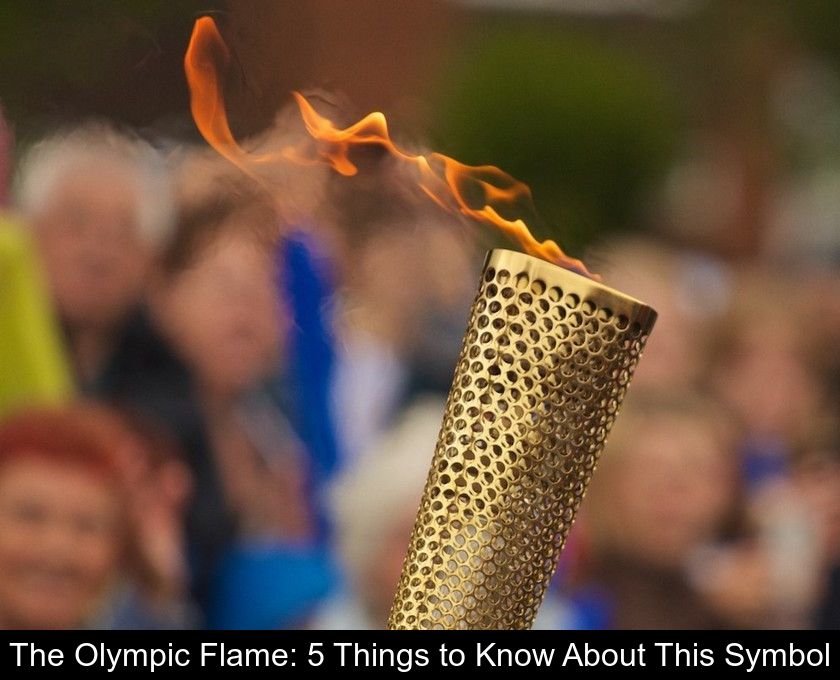The Olympic Flame: 5 Things To Know About This Symbol
At every Olympiad, the arrival of the Olympic flame and the lighting of the cauldron are the highlights of the opening ceremony of the Olympic Games. But do you know the origin of this tradition? Here are 5 things to know about this highly symbolic torch.
This symbol first appeared at the 1928 Olympic Games.
Nowadays, the Olympic flame is an essential element of the Olympic Games ceremony. Yet, it did not appear at the first Games of the modern era in 1896!
It was not until July 28, 1928, during the Summer Olympics in Amsterdam, that this tradition, inspired by ancient Greece, was revived.
This flame is a symbol inspired by antiquity.
The Olympic flame is a symbol that creates a connection between the modern-era Games and ancient Greece. The ceremony surrounding this flame is indeed inspired by antiquity.
In ancient Greece, a sacred fire burned continuously in sanctuaries, including in the sanctuary of Hera at Olympia, the city that hosted the ancient Olympic Games.
A flame also burned at the sports venues and during the banquet given to the winners of the Games in the Prytaneum.
The first relay was organized in 1936.
When the Olympic flame first appeared in 1928, there was not yet a relay to carry the torch. The first relay was organized for the Summer Olympics of 1936 in Berlin.
This idea, supported by the Nazi regime of the Third Reich and Joseph Goebbels, has regularly caused controversy due to its origins. However, it has never been challenged since, even though the flame is sometimes targeted by protesters during its journey.
Nowadays, this relay symbolizes the unity between nations. It also serves to honor the various runners. The final bearer is usually a famous athlete from the host country. During the opening ceremony, they light a Cauldron with their torch where the sacred fire will burn for the duration of the Games.
The flame has been lit in Olympia since 1952.
Before being brought to the host city of the Olympic Games by the torchbearers, the Olympic flame is lit in Olympia since 1952. That same year, the flame burned for the first time at the Winter Olympics in Oslo, Norway.
This sacred fire is lit in the presence of the Olympic committee during a ceremony inspired by the ancient ritual. Women, playing the role of priestesses of Hera and wearing tunics in the ancient style, light this flame on the ruins of the temple of Hera in Olympia. Another notable fact is that this fire is lit using the sun's rays, concentrated with a parabolic mirror.
The sacred flame is placed in a ceramic urn and transported to the ancient stadium of Olympia during a procession that passes before a wild olive tree. The high priestess lights the torch and hands it to the very first torchbearer.
The first torchbearers carry it to the Panathenaic Stadium which hosted the Summer Olympics of 1896. From there, the flame begins a long journey that ends at the opening ceremony of the Games.
5- The relay of the torch is an extraordinary journey.
The Olympic torch relay is always an extraordinary journey, but not without risks. It happens that the torch may be accidentally or deliberately extinguished. In such cases, it must be relit by a regulation backup flame, that is, a lantern containing the "mother flame" from Olympia.
Since the inception of the torch relay, host countries have competed in creativity to transport this sacred fire. In 1952, the Olympic flame crossed the Arctic Circle.
In 1976, it was transformed into a radio signal transmitted from Athens to Canada, where it was used to rekindle another flame with a laser beam.
In 2000, the Olympic torch traveled on a Native American canoe, on a camel, aboard a Concorde airplane, and was even carried underwater by divers near the Great Barrier Reef.
In 2008, it was taken to the summit of Mount Everest, at an altitude of 8,848 meters, protected from the lack of oxygen by a special miner's lamp.
In 2013 and 2014, it traveled across Russia, to the North Pole, under the waters of Lake Baikal, and even into space! It was launched aboard a Soyuz rocket to the International Space Station (ISS).





